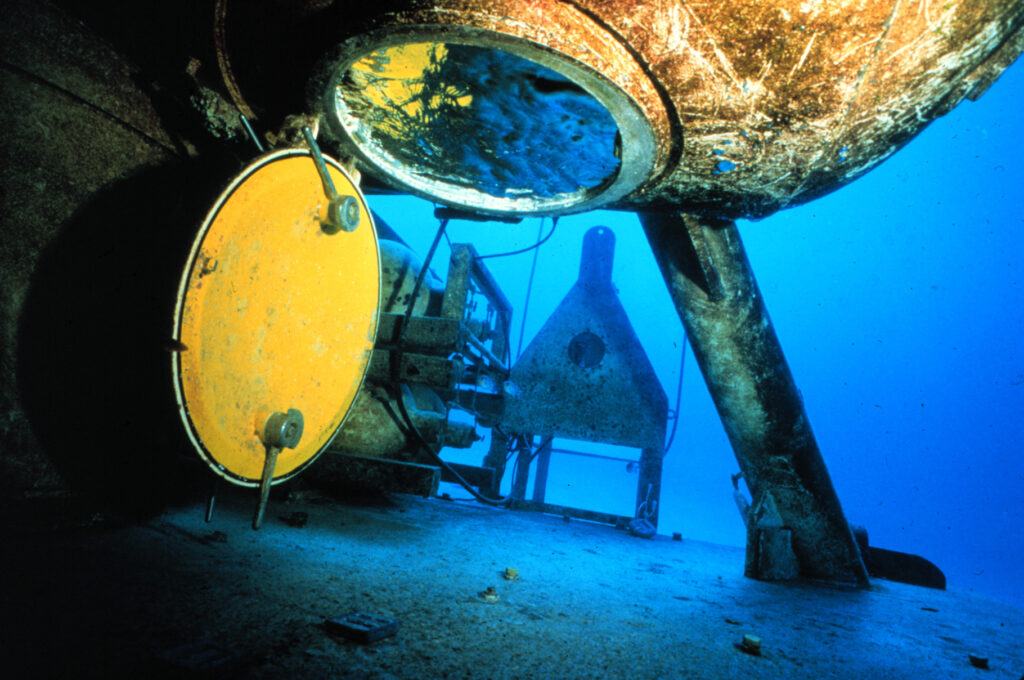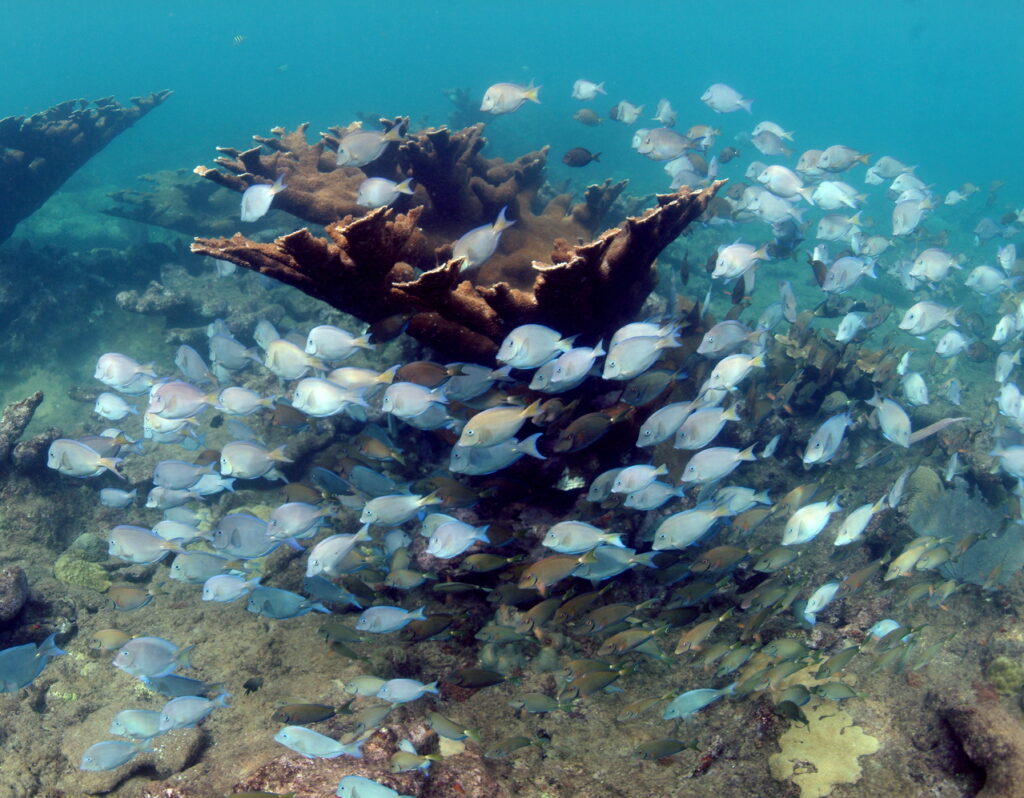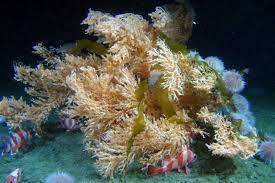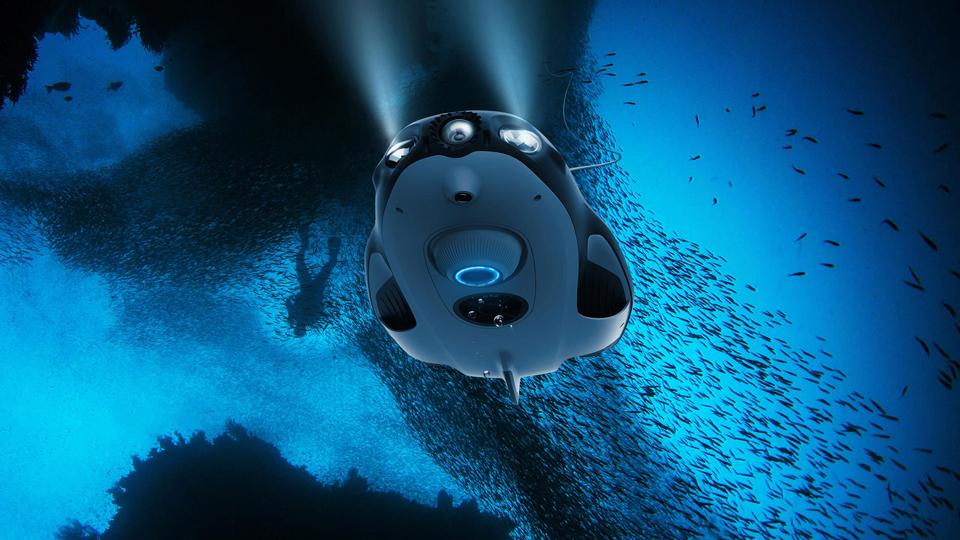Underwater habitats are structures designed to allow humans to live and work in an underwater environment. These habitats can be used for a variety of purposes, including scientific research, commercial activities such as aquaculture or underwater mineral extraction, and as tourist attractions.
The most common type of underwater habitat is the saturation diving system, in which divers live in a pressurized environment that maintains their bodies at the same pressure as the surrounding water. This eliminates the need for decompression and allows divers to work for long periods of time at great depths. Other types of underwater habitats include submersibles, which are vehicles that can be submerged and operated underwater, and underwater hotels or resorts, which offer guests the unique experience of living and exploring the underwater world.
Underwater habitats are typically made of strong, waterproof materials such as steel or titanium, and are equipped with life support systems that provide air, light, heat, and other necessities. The interiors of these habitats can be outfitted with amenities like sleeping quarters, kitchens, and laboratories to make the occupants’ stay as comfortable as possible.
In order to ensure the safety of those who live and work in underwater habitats, strict protocols and procedures are followed, including regular maintenance and inspections, and the use of backup systems to ensure the continued operation of the habitat in case of emergencies.
Overall, underwater habitats are exciting and innovative structures that provide unique opportunities for people to explore and learn about the underwater world, and to carry out important scientific and commercial activities in this environment.
Importance of Underwater Habitats
Underwater habitats play a crucial role in several fields, including science, exploration, tourism, and commercial activities. Some of the key benefits and importance of underwater habitats are:
- Scientific Research: Underwater habitats provide scientists with a unique platform to conduct research on the marine environment and its inhabitants. These habitats can be equipped with laboratory facilities, making it possible for scientists to carry out experiments, collect samples, and study marine life up close.
- Exploration: Underwater habitats allow divers and researchers to explore the deep ocean and other underwater environments that were previously inaccessible. They offer a safe and comfortable base from which to carry out dives and gather information about the underwater world.
- Tourism: Underwater habitats can serve as tourist attractions, offering visitors a unique experience of living and exploring the underwater world. Such habitats can be designed as underwater hotels, where guests can spend a night or more observing marine life and learning about the ocean environment.
- Commercial Activities: Underwater habitats can be used for commercial activities such as aquaculture, where fish and other marine life are raised and harvested for food. They can also be used for mineral extraction, providing a platform for companies to extract valuable resources from the ocean floor.
- Environmental Monitoring: Underwater habitats can be equipped with monitoring systems that provide valuable information about the marine environment, including water temperature, acidity, and the presence of pollutants. This information is crucial for understanding the health of the ocean and for protecting marine life.
- Advancements in Technology: The development and use of underwater habitats push the boundaries of technology, leading to advancements in materials, life support systems, and other areas of marine technology.

In conclusion, underwater habitats are a critical tool for advancing our understanding of the ocean, promoting conservation and sustainability, and providing unique and exciting experiences for people of all ages.
Ocean Research and Exploration
Ocean research and exploration are important fields that aim to increase our understanding of the world’s oceans and the life they support. This knowledge is crucial for addressing a wide range of environmental and societal issues, including climate change, food security, and the conservation of marine life.
Ocean research covers a wide range of topics, including the study of oceanography, marine biology, and marine geology. Researchers use various techniques to gather data, including underwater vehicles, remotely operated vehicles (ROVs), and autonomous underwater vehicles (AUVs), as well as ships equipped with scientific instruments and divers equipped with specialized equipment.
Ocean exploration involves the discovery and investigation of previously unknown areas of the ocean, including the deep sea and the polar regions. This type of exploration helps us understand the diversity of marine life, the geology of the ocean floor, and the processes that shape the ocean and the Earth as a whole.
Ocean research and exploration are important not only for advancing our scientific knowledge, but also for addressing practical issues such as climate change, sustainable fishing, and ocean conservation. For example, understanding the impact of climate change on the ocean and its ecosystems is crucial for predicting and mitigating its effects on marine life, coastal communities, and human health.

In addition, ocean research and exploration also have economic benefits, including the discovery of new sources of minerals and energy, the development of new technologies, and the creation of new industries and jobs.
Overall, ocean research and exploration are vital fields that are essential for increasing our understanding of the ocean and the life it supports, and for addressing the many challenges faced by the marine environment and humanity.
Underwater Habitats as an Important Part of Ocean Research
Underwater habitats play a crucial role in ocean research by providing scientists with a platform to conduct experiments and gather data in the marine environment. These habitats offer several advantages over other research methods, including:
- Access to the Deep Ocean: Underwater habitats allow scientists to live and work at depths that were previously inaccessible, providing unique opportunities to study the deep ocean and its inhabitants.
- Increased Time in the Ocean: By living and working in underwater habitats, scientists can spend extended periods of time in the ocean, allowing for more comprehensive studies and a deeper understanding of the marine environment.
- Controlled Environment: The pressurized and controlled environment of underwater habitats provides a stable and predictable environment for conducting experiments and observing marine life. This is particularly useful for studying sensitive species that may be affected by changes in water pressure, light, or temperature.
- Increased Safety: Underwater habitats provide a safe and comfortable base for scientists to work from, reducing the risk of accidents or other safety concerns associated with diving.
- Collaboration: The living quarters and laboratory facilities of underwater habitats allow for multi-disciplinary teams to work together and share information, leading to more collaborative and comprehensive research efforts.
These advantages make underwater habitats an important tool for ocean research, providing scientists with the ability to study the marine environment in new and innovative ways.
Examples of research carried out in underwater habitats include studies of the behavior and ecology of deep-sea animals, the examination of the impact of human activities such as oil spills and pollution on the ocean and its inhabitants, and the exploration of new frontiers in oceanography, geology, and marine biology.
In conclusion, underwater habitats play a critical role in ocean research, providing scientists with unique opportunities to increase our understanding of the ocean and the life it supports. These habitats are an important tool for addressing a wide range of environmental and societal issues, and for advancing our scientific knowledge of the ocean and the world as a whole.
Exploring Underwater Habitats : Types

Underwater habitats can be classified into several types based on their design, function, and location. Some of the most common types of underwater habitats include:
- Research Submersibles: These are specialized underwater vessels that are used to transport scientists to and from the deep ocean. They are typically small and maneuverable, allowing them to access areas that are difficult to reach with other types of vessels.
- Habitat Pods: Habitat pods are small, self-contained underwater structures that can be used for short-term stays by scientists or tourists. They are typically deployed at shallow depths and offer a limited range of facilities, including sleeping quarters and a small laboratory.
- Underwater Laboratories: These are larger, more permanent structures that are used for extended stays by scientists. They typically include living quarters, laboratory facilities, and support systems such as life support and communications systems. Some underwater laboratories are attached to the ocean floor, while others are free-floating.
- Underwater Hotels: These are specialized underwater habitats that are designed for tourists and offer an immersive experience of the underwater world. They typically include sleeping quarters, dining facilities, and other amenities.
- Oil Rig Habitats: These are habitats that are located on offshore oil rigs and are used to house workers who are involved in drilling and extraction operations. They are typically large structures that are designed to withstand the harsh conditions of the open ocean.
- Underwater Caves: These are natural underwater habitats that are formed by the erosion of rocks and other materials. They provide unique environments for the study of marine life and geology and are often used as a base for exploration and research.
Each type of underwater habitat offers unique advantages and challenges, and the choice of habitat will depend on the specific needs and goals of the research project or activity.
In conclusion, underwater habitats play a crucial role in ocean exploration and research by providing scientists and tourists with a safe and comfortable base from which to study and experience the underwater world. The different types of underwater habitats offer unique opportunities and advantages, and the choice of habitat will depend on the specific needs and goals of the project.
Conclusion
In conclusion, underwater habitats are an important tool for ocean exploration and research, providing scientists, tourists, and workers with a safe and comfortable platform from which to study and experience the underwater world. These habitats play a crucial role in advancing our scientific knowledge of the ocean and its inhabitants, and in addressing a wide range of environmental and societal issues.
The different types of underwater habitats, including research submersibles, habitat pods, underwater laboratories, underwater hotels, oil rig habitats, and underwater caves, offer unique advantages and challenges, and the choice of habitat will depend on the specific needs and goals of the research project or activity.

Underwater habitats have revolutionized ocean research by providing scientists with the ability to live and work in the ocean for extended periods of time, enabling more comprehensive studies and a deeper understanding of the marine environment. They have also opened up new frontiers for exploration and discovery, and are an important tool for addressing critical environmental and societal issues such as climate change, ocean pollution, and the conservation of marine life.
Overall, underwater habitats play a critical role in the exploration and understanding of the ocean, and will continue to be an important tool for ocean research and discovery for many years to come.











